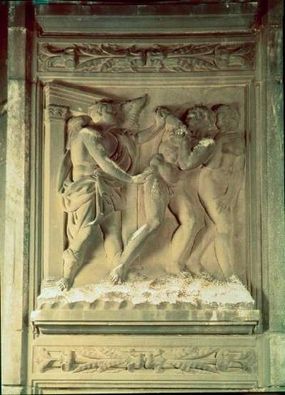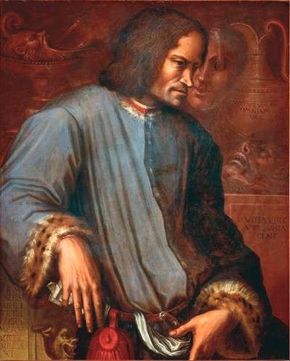Michelangelo's Struggles
Michelangelo was a man of surly and crude behavior, yet from his hand sprang forth the most tender and poignant scenes of mother and child and creator and sinner to be seen. A devout and dutiful Christian, Michelangelo was openly critical of corrupt priests, yet he harbored an obsession with physical beauty, particularly the rhythmic sensuality of the nude male form.
Possessing a powerful sense of his own imperfection, Michelangelo pressed himself to exceed all expectations and was often frustrated by patrons who failed to meet their obligations. In the end, Michelangelo enjoyed a spectacular career marked by sculptures, paintings, and buildings symbolic of strength, youth, power, and rebirth. Yet in his search for atonement, Michelangelo spent the last four decades of his life preparing for his death.
Advertisement
Of the many crippling conflicts Michelangelo faced, one of the most serious was the battle between his genius and his reputation as a malcontent. The artist was known for his severe temperament, his terribilitá, which caused more than one of his patrons to think carefully before cautiously proceeding with a commission. A lesser artist's career would have suffered, but what Michelangelo lacked in grace and gentility he compensated for in artistic force and grandeur.
It was Michelangelo's great fortune that the political climate of the Italian High Renaissance created an environment hungry for glorious monuments created by a great artist. Leaders of the day, both religious and secular, demanded works in an increasingly heroic scale as tributes to their own egos; no artist of the period was more dominant in creating gigantic and masterful works in a variety of media than Michelangelo. His work, which transcended the very era it defined, became the standard for all artists to follow.

With the death of his patron Lorenzo de' Medici in 1492, Michelangelo soon left his beloved Florence for the first time. His creative cocoon was a city divided. In an early indication of the artist's instinct to flee, Michelangelo went to Venice. His visit to Bologna in the winter of 1494-1495 would prove to be brief but important because he was exposed to the works of earlier artists.
The reliefs of Jacopo della Quercia, with their emphasis on athletic, powerfully built nudes and human figures of great dignity, intensified Michelangelo's fascination with the human form and influenced his style. Quercia's reliefs played a role fifteen years later in some of the grandest images on the Sistine ceiling.
In spite of his various struggles, Michelangelo was building the foundation of knowledge and skills he would need to create his masterpieces. Learn about the first of these -- the Pietà for St. Peter's Basilica and the David -- in the next section of this article.
